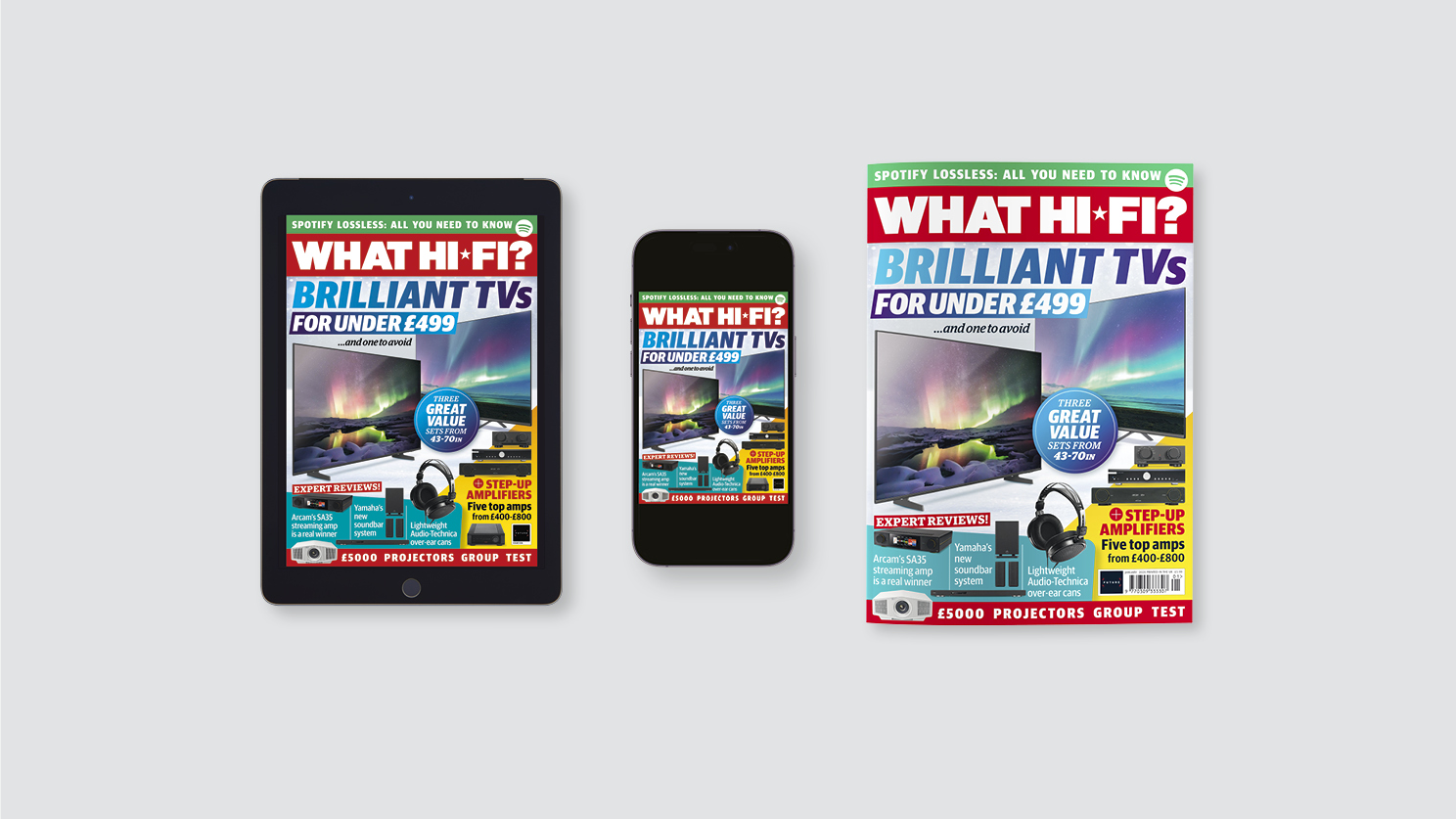What Hi-Fi? Verdict
An impressively wide-sounding, articulate and crisp Dolby Atmos soundbar, but it occasionally lacks tonal consistency and authenticity
Pros
- +
Expansive breadth
- +
Sleek design
- +
Clear vocal projection
Cons
- -
No DTS support
- -
Noticeably processed sound
- -
Not as Atmos-y as the best
Why you can trust What Hi-Fi?
Despite a long-standing reputation for audio excellence, including, for a long while, near-dominance within the realm of noise-cancelling headphones, Bose has managed to remain something of an enigmatic company. From changes of CEO going unannounced to its well-known reluctance to publish technical specifications, this privately owned and publicly reticent corporation has always preferred to let its products do the talking.
It’s somewhat surprising that Bose, which released its first soundbar in 2011, has until now resisted the urge to throw its hat into the lucrative, if challenging Dolby Atmos market. But with the launch of the Smart Soundbar 900, the company has clearly taken its time to craft a worthy soundbar that it believes can deliver 3D audio, saying that “it produces a layer of realism no other speaker can duplicate”.
A bold claim indeed, but with several of the most popular Dolby Atmos soundbars produced by relative newcomers to audio electronics, we’re certainly curious to see how a brand with such a strong sonic legacy tackles the inherent difficulties and limitations of producing immersive cinematic sound from a single, linear soundbar.
Price
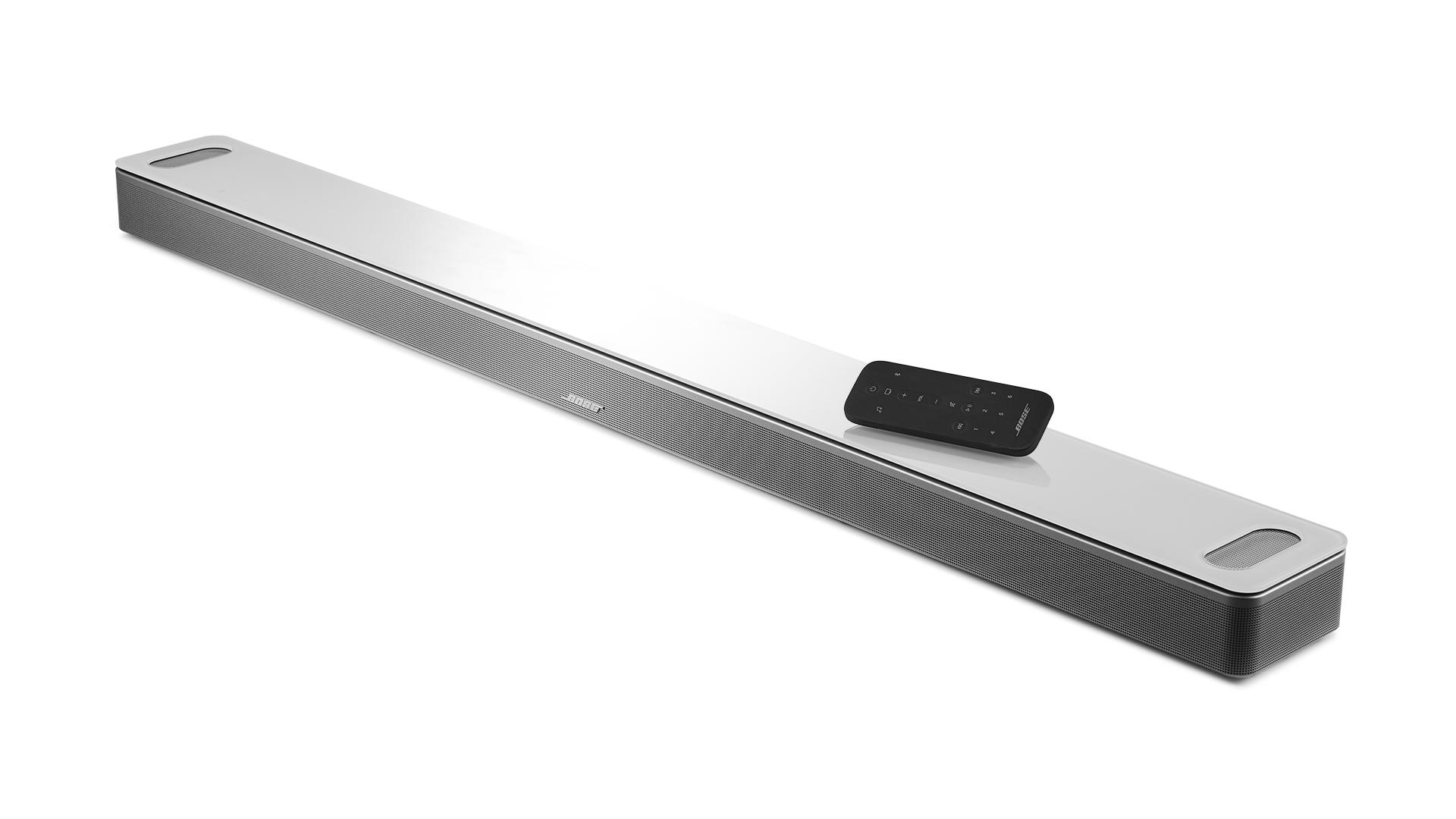
At £849 / $900 / AU$1399 the Bose smart Soundbar 900 just undercuts its main rival, the What Hi-Fi? Award-winning Sonos Arc (£899 / $899 / AU$1499). Both are positioned as premium, wi-fi-enabled 5.0.2 soundbars that can be supplemented with additional surrounds or a sub, and both can be grouped with their respective brand's smart speakers as part of an integrated multi-room set-up.
For Bose, those optional extras include the petite Bose Surround Speakers 700 (£550 / $549 / around AU$1000) and Bose Bass Module 700 (£800 / $799 / AU$1000) whereas the Sonos can be expanded through the addition of two One SL speakers (£358 / $358 / AU$538) and a Sub (£749 / $749 / AU$1499). Neither brand, however, has an option for surrounds with integrated height drivers, a feature that both Samsung and LG’s flagship soundbar packages offer.
Design and features

Superseding the Smart Soundbar 700 (£800 / $800 / AU$1200), the Soundbar 900 is designed for 50-inch TVs or larger and has a very similar eye-catching aesthetic to its predecessor, with rounded corners, a metal grille and a polished, impact-resistant tempered glass top.
Available in black or arctic white, the sparkling surface looks very sleek but can reflect a lot of screen glare and, of course, requires some regular buffing to keep it looking at its best. Other than an extra 6.7cm in length, the only real visual differentiator of the Soundbar 900 from its non-Atmos sibling is the pair of lozenge-shaped cutouts in the glass topper for two dipole, up-firing transducers.
The latest hi-fi, home cinema and tech news, reviews, buying advice and deals, direct to your inbox.
All together the Soundbar 900 has nine channels of amplification, two fewer than the Sonos Arc. As well as the pair of height drivers, inside you’ll find one centre tweeter flanked by four racetrack transducers. Despite the appearance of its completely wrap-around grille, there are no side-firing drivers. Instead, there are two further transducers positioned at the far left and right that use Bose's PhaseGuide technology, which the company says will beam multi-directional sound to distinct areas in your room.
There are only two physical controls on the soundbar’s surface, a capacitive multi-use ‘action’ button and a mute/unmute for the built-in microphone array used to activate either of the supported voice assistants – Amazon’s Alexa and Google assistant. The onboard Alexa also allows users to make and receive intercom calls to other Bose smart products and Amazon Echo devices, or make hands-free calls to anyone from within your contacts list. Meanwhile, Bose’s Voice4Video feature further expands Alexa's capabilities by enabling users to turn on and control their TV or satellite box using their voice.
Underneath these buttons is a slim LED light bar that indicates the status of the soundbar through a near diabolical variety of pulses and colour changes. To decode them you’ll likely need to refer to the key in the manual where around 25 different variations are listed.
The LED gives visual feedback on changes made using the minimal remote. Unlike the backlit Universal Remote included with the Soundbar 700, the 900’s controller is around half the size and offers un-illuminated access to source selection, basic playback functions and up to six presets of preferred music stations or streaming services.
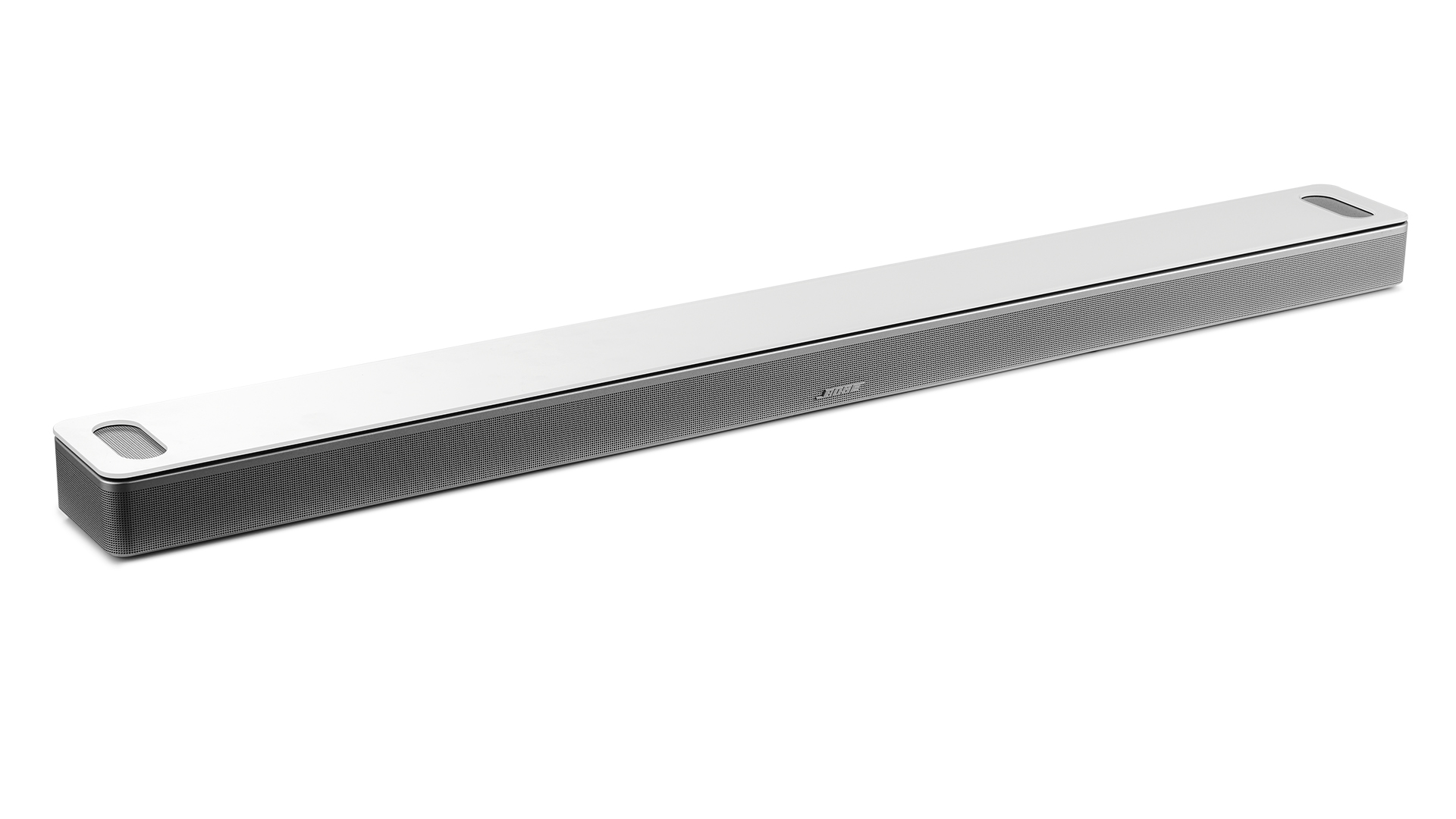
Channels 5.0.2
Audio formats Dolby Atmos, Dolby Digital, Dolby TrueHD, Dolby Digital Plus
Chromecast Via firmware update in January 2022
Bluetooth 4.2
Wi-fi Yes
Inputs HDMI eARC, optical
Dimensions (hwd) 5.8 x 105 x 11cm
Weight 5.8kg
For more in-depth control, the Bose Music app (available for iOS and Android) is very user friendly and includes a two-band EQ and discrete level control of the centre and height channels as well as a dialogue boost mode. This is the only additional sound mode aside from the Soundbar 900’s standard profile, which uses Bose’s TrueSpace technology to up-mix non-Atmos content. This means that regardless of whether you’re watching a film in 5.1 or streaming a track in stereo, the Soundbar 900’s internal DSP will make decisions about when, and when not, to use the height transducers. Unfortunately, there is no way to disable this AI feature and although sometimes it adds a welcome depth it can alter the tonal character of the audio.
The Bose Music app is also where you’ll find ADAPTiQ, Bose’s room calibration software, which quite novelly requires you to wear a headband with a microphone on the top as you sit in multiple listening locations around your room. It's surprisingly less fiddly than other optimisation techniques we’ve tried before and relatively effective (in our fairly large listening room it brings out more of the low end and adds more weight to the height channels) with the option to toggle the resulting changes on and off.
The included ADAPTiQ headset tethers to the soundbar via a mini-jack to the rear of the bar where a quartet of 3.5mm sockets also offer connectivity for a wired bass module, data and an infrared transmitter.
In a second cable recess is a single HDMI eARC port, an optical in, ethernet and a USB socket. While it’s a shame that there’s no extra HDMI passthrough there’s a decent selection of options for streaming content with wi-fi, Bluetooth 4.2, Spotify Connect and AirPlay 2. Moreover, from January 2022 there will also be Chromecast onboard by way of a retroactive firmware update.
Sound format support for the Soundbar 900 is fairly partisan with decoding only available for Dolby Atmos, Dolby Digital, Dolby TrueHD and Dolby Digital Plus.
Sound
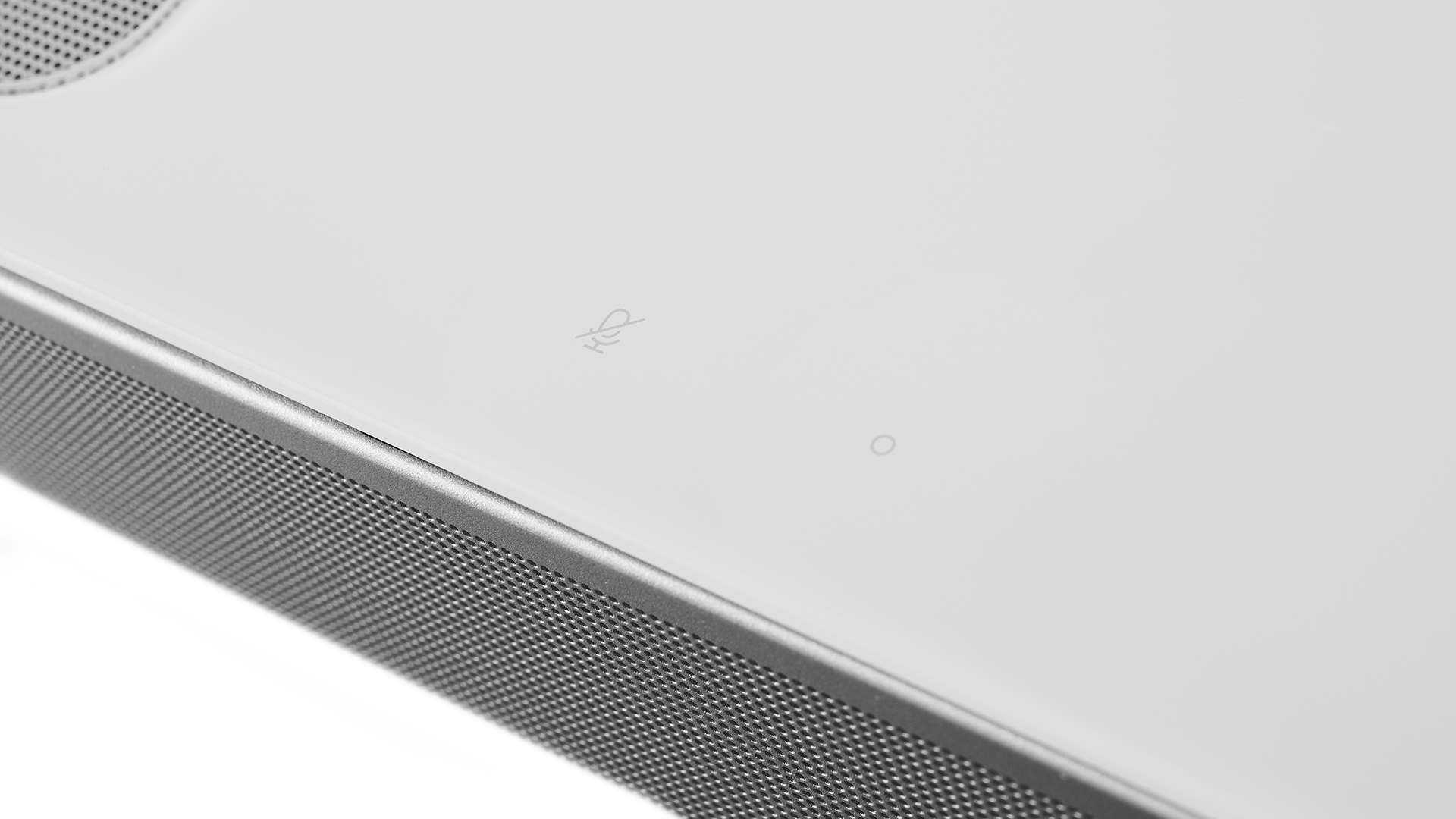
To get an understanding of how TrueSpace functions we begin our testing with the opening scene of The Social Network in 5.1 on DVD. In this instance, the height drivers appear to perform like an extension of the far left and right channels, mainly reproducing the higher frequency atmospheric sounds of the bar in which a charmless Mark Zuckerberg is about to get dumped.
The background clatter of glasses and music feels notably widespread and there’s a real sensation of certain noises coming from either side of the listening position. However, this ambience is given an overly reverberant quality that clutters the sound design and creates some timing issues. The dialogue is very crisp and clear but overall there’s a touch of murkiness added to the scene that isn’t there when it’s delivered by the Sonos Arc.
Later, as Zuckerberg runs back to his dorm room, the passing traffic convincingly sails across the expansive soundstage, with PhaseGuide again making it appear as though particular noises are coming from the sides. This can also have the effect of overemphasising certain sounds, especially with sharper transients such as the clicking spokes of a passing student’s bike or the out-of-shot bottle top that flips off Mark’s beer, both of which sound disproportionately outsized.
Swapping to the first race of Ready Player One, in Dolby Atmos, everything sounds much tighter and more coherent. In this car-flipping action sequence the dynamic sensations of movement that the Soundbar 900 creates are much more appropriate and the soundstage feels pleasingly immersive. The slightly elevated high frequency sounds in the zipping traffic and spilling coins are pertinent with plenty of sparkle adding to the drama and excitement of the race. The low end, though, while fairly well defined, isn’t particularly dynamic, leaving King Kong’s destructive rampage feeling slightly flat. Just when you want and expect the soundbar to kick into another gear, it falters, apparently having run out of dynamic headroom.
And while there’s undeniably some projection to the sides, making you feel in amongst the traffic, there isn’t much feeling of height that extends outward beyond the screen even when we crank up the upward drivers. Of course, it’s a big ask to expect any soundbar to deliver height in the way overhead speakers do, but the Sonos Arc’s performance in this aspect is stronger.
We move on to the opening of Baby Driver in Dolby Atmos, in which Baby picks up post-heist coffee for the team. Again there’s lots of scope from left to right as Baby crosses paths with other pedestrians, but the Soundbar 900 also adds spaciousness that seems to exaggerate the distances being portrayed by the camera. For instance, when Baby is about to walk past a motorbike that is just out of shot, the revving sounds distantly atmospheric, whereas other systems give it more proximity. That said, in the subsequent warehouse scene, the Bose’s airiness enhances the reverberance, creating a naturalistic feeling of the space.
The accompanying Harlem Shuffle underscore is presented with plenty of attack and speed, especially in the emphatic higher frequencies and capable mid-range. Though when things get more complicated in scenes with music, effects and dialogue, such as the opening to Tick, Tick...Boom! on Netflix (also in Dolby Atmos), a muddiness creeps into the mids that can impact intelligibility. However, here the handy option to boost the centre channel helps to quickly correct this.
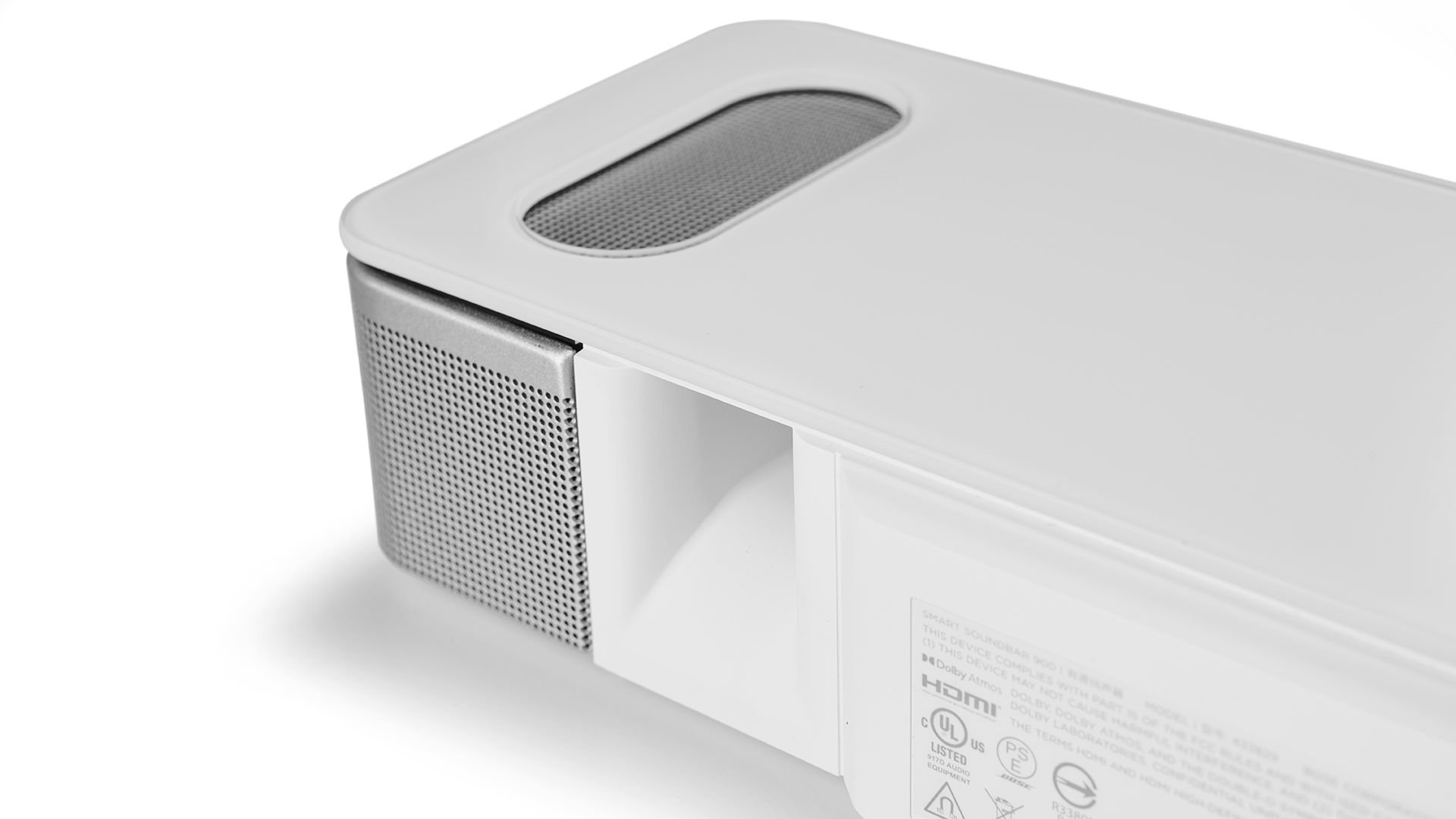
Much like with film content, the Soundbar 900’s stereo music delivery is also something of a mixed bag. Starting with the acapella version of Tom’s Diner by Suzanne Vega there’s a clean directness to the vocal and the upward drivers seem to add extra reverberance that, while not exactly authentic, has a pleasant broadening effect.
Switching to Maurizio Pollini playing Chopin’s Nocturne No.5 in F Sharp the dynamic subtleties of the piano are quite nicely reproduced, and although the forward treble means that higher notes have more emphasis and Pollini’s breaths feel very present, it doesn’t veer into harshness and fills the room with ease.
But with busier, percussive tracks the extra processing of the Soundbar 900 seems to cause a loss of distinction. On Beyoncé’s Hold Up this blurriness is noticeable with the sample of Andy Williams' Can't Get Used To Losing You and the timing of the percussive elements of the arrangement. While Beyoncé’s vocal cuts through with insistent urgency, some of the warmth and gravel of her mezzo-soprano is diminished and the bass is noticeably more curtailed than when listening via the Sonos Arc, which has an altogether much more joined-up and transparent handle on music.
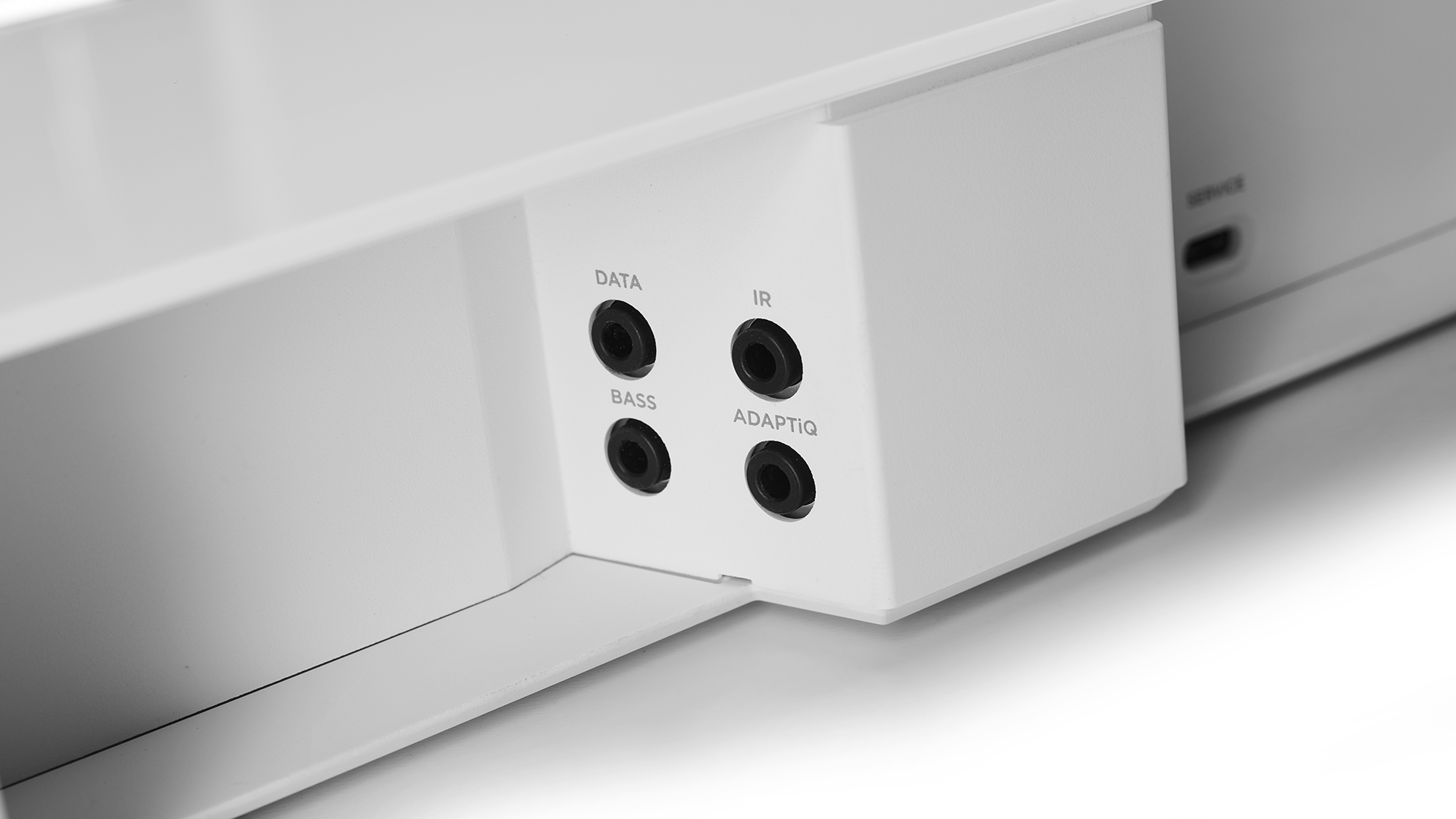
Verdict
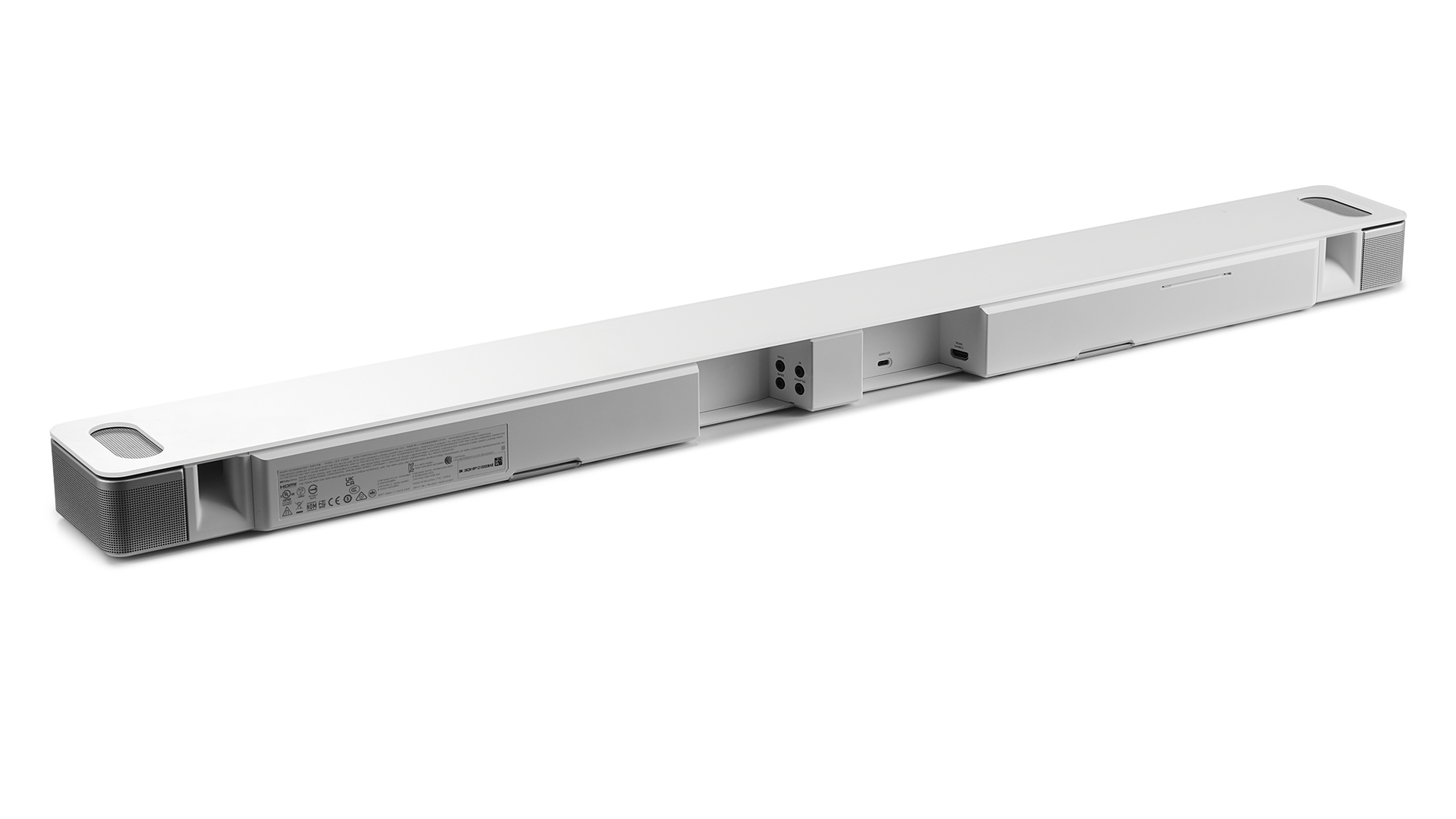
The Bose Smart Soundbar 900 takes a fairly idiosyncratic sonic approach to both Dolby Atmos and standard content, which while frequently entertaining, is somewhat inconsistent in its effectiveness and occasionally adds its own organisational structure and tonal colour.
With an impressively wide soundfield, clear forward projection and bright character, many listeners will likely be very pleased with its responsive and cinematic performance. However, if you’re looking for the ultimate premium Atmos soundbar, we’d suggest spending that very small amount extra for the added height, transparency, musicality and dynamics of the Sonos Arc.
SCORES
- Sound 4
- Build 5
- Features 5
MORE:
Read our review of the Sonos Arc
Also consider the Sony HT-A7000
Here are the Best Soundbars 2021: the best TV speakers you can buy
What Hi-Fi?, founded in 1976, is the world's leading independent guide to buying and owning hi-fi and home entertainment products. Our comprehensive tests help you buy the very best for your money, with our advice sections giving you step-by-step information on how to get even more from your music and movies. Everything is tested by our dedicated team of in-house reviewers in our custom-built test rooms in London, Reading and Bath. Our coveted five-star rating and Awards are recognised all over the world as the ultimate seal of approval, so you can buy with absolute confidence.

